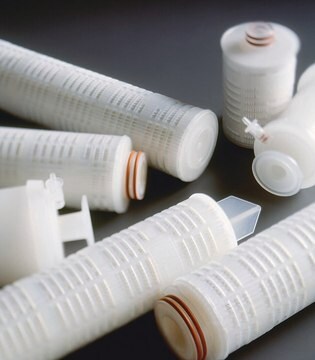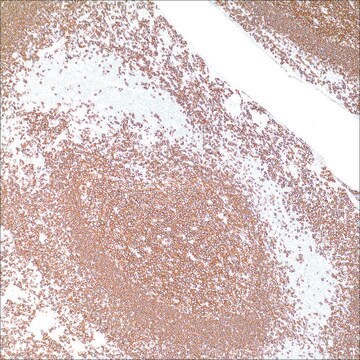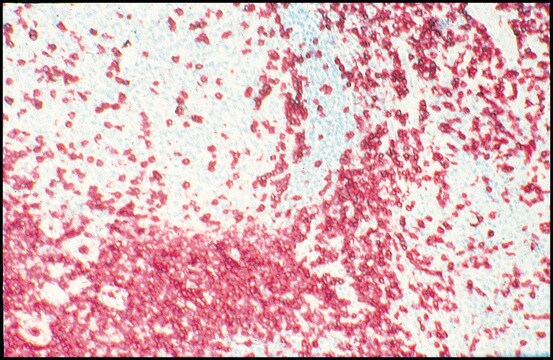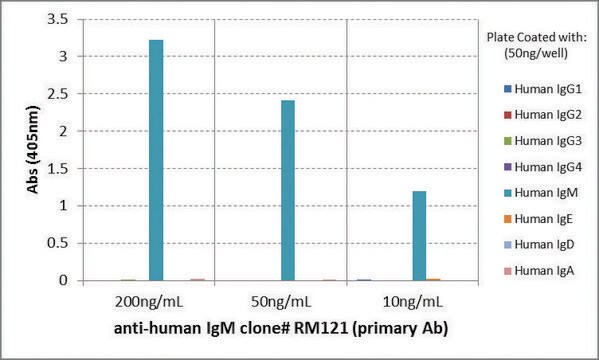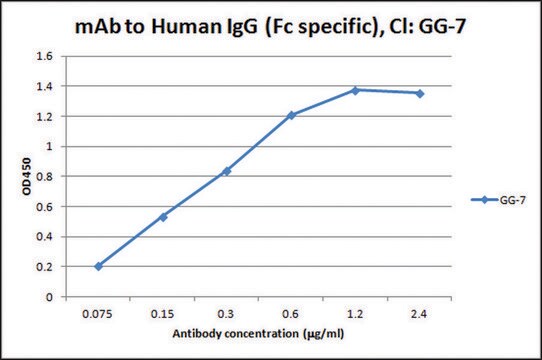一般說明
We are committed to bringing you greener alternative products, which adhere to one or more of The 12 Principles of Green Chemistry.This antibody is Preservative-free, produced without the harm or sacrifice of animals and exceptionally stable to allow for ambient shipping and storage if needed and thus aligns with "Waste Prevention", "Designing Safer Chemicals" and "Design for Energy Efficiency".
Click here for more information.
ZooMAb® antibodies represent an entirely new generation of recombinant monoclonal antibodies.Each ZooMAb® antibody is manufactured using our proprietary recombinant expression system, purified to homogeneity, and precisely dispensed to produce robust and highly reproducible lot-to-lot consistency. Only top-performing clones are released for use by researchers. Each antibody is validated for high specificity and affinity across multiple applications, including its most commonly used application. ZooMAb® antibodies are reliably available and ready to ship when you need them.
特異性
Clone 1E10 is a ZooMAb® Rabbit recombinant monoclonal antibody that specifically detects CD20. It targets an epitope within 16 amino acids from the second extracellular domain.
免疫原
KLH-conjugated linear peptide corresponding to 16 amino acids from the second extracellular domain from the C-terminal half of human CD20.
應用
Quality Control Testing
Evaluated by Western Blotting in Ramos cell lysate.
Western Blotting Analysis: A 1:1,000 dilution of this antibody detected CD20 in Ramos cell lysate.
Tested applications
Western Blotting Analysis: A 1:1,000 dilution from a representative lot detected CD20 in Daudi cell lysate.
Immunocytochemistry Analysis: A 1:100 dilution from a representative lot detected CD20 in Ramos cells.
Affinity Binding Assay: A representative lot of this antibody bound CD20 with a KD of 3.2 x 10-7in an affinity binding assay.
Immunohistochemistry (Paraffin) Analysis: A 1:100 dilution from a representative lot detected CD20 in human tonsil tissue sections.
Flow Cytometry Analysis: 1 μg from a representative lot detected CD20 in one million Ramos cells.
Note: Actual optimal working dilutions must be determined by end user as specimens, and experimental conditions may vary with the end user
標靶描述
B-lymphocyte antigen CD20 (UniProt: P11836; also known as B-lymphocyte surface antigen B1, Bp35, Leukocyte surface antigen Leu-16, Membrane-spanning 4-domains subfamily A member 1, CD20) is encoded by the MS4A1 (also known as CD20) gene (Gene ID: 931) in human. CD20 is a multi-pass homotetrameric, non-glycosylated membrane protein that is expressed on the surface of normal and malignant B-lymphocytes. Its expression is reportedly initiated at the pre-B cell stage of development and remains present until terminal differentiation into a plasma cell at which time it is lost. It has three cytoplasmic domains, four transmembrane domains, and two extracellular domains. Its both N- and C-termini reside within the cytoplasm. It plays a role in the regulation of cellular calcium influx necessary for the development, differentiation, and activation of B-lymphocytes. It functions as a store-operated calcium channel component. It undergoes phosphorylation by PKC on serine and threonine residues in resting cells and these phosphorylations are reported to be higher in proliferating malignant B cells than in resting cells. CD20 is considered as an important therapeutic target in the treatment of B cell malignancies and various antibodies have been developed that bind to different epitopes. Mutations in MS4A1 gene are known to cause common variable immunodeficiency 5 (CVID5) that is characterized by failure of B-cell differentiation, hypogammaglobulinemia, recurrent bacterial infections, and an inability to mount an antibody response to antigen. This ZooMAbZooMAb® recombinant monoclonal antibody, generated by our propriety technology, offers significantly enhanced specificity, affinity, reproducibility, and stability over conventional monoclonals. (Ref.: Pavlasova, G., and Mraz, M. (2020). Haematologica. 105(6); 1494-1506; Klein, C., et al. (2013). MAbs. 5(1); 22-33; Bubien, JK., et al. (1993). J. Cell Biol. 121(5); 1121-1132).
外觀
Purified recombinant rabbit monoclonal antibody IgG, lyophilized in PBS, 5% Trehalose, normal appearance a coarse or translucent resin. The PBS/trehalose components in the ZooMAb formulation can have the appearance of a semi-solid (bead like gel) after lyophilization. This is a normal phenomenon. Please follow the recommended reconstitution procedure in the data sheet to dissolve the semi-solid, bead-like, gel-appearing material. The resulting antibody solution is completely stable and functional as proven by full functional testing. Contains no biocide or preservatives, such as azide, or any animal by-products. Larger pack sizes provided as multiples of 25 μL.
重構
300 μg/mL after reconstitution at 25 μL per vial. Please refer to guidance on suggested starting dilutions and/or titers per application and sample type.
儲存和穩定性
Recommend storage of lyophilized product at 2-8°C; Before reconstitution, micro-centrifuge vials briefly to spin down material to bottom of the vial; Reconstitute each vial by adding 25 μL of filtered lab grade water or PBS; Reconstituted antibodies can be stored at 2-8°C, or -20°C for long term storage. Avoid repeated freeze-thaws.
法律資訊
ZooMAb is a registered trademark of Merck KGaA, Darmstadt, Germany
免責聲明
Unless otherwise stated in our catalog or other company documentation accompanying the product(s), our products are intended for research use only and are not to be used for any other purpose, which includes but is not limited to, unauthorized commercial uses, in vitro diagnostic uses, ex vivo or in vivo therapeutic uses or any type of consumption or application to humans or animals.

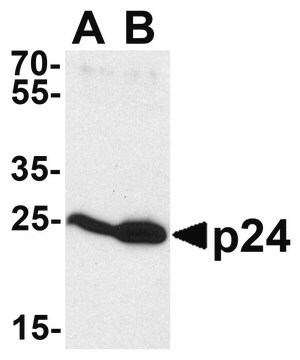
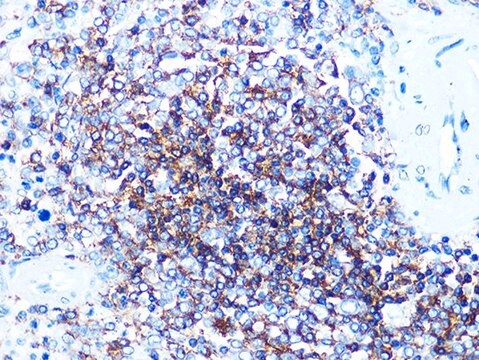

![Monoclonal Anti-HIV-1 p24 [7F4] antibody produced in mouse purified antibody (Protein A IgG)](/deepweb/assets/sigmaaldrich/product/images/450/733/43d24303-da45-47eb-ba25-f661717edf99/640/43d24303-da45-47eb-ba25-f661717edf99.jpg)
![Monoclonal Anti-HIV-1 p24 [8G9] (biotin) antibody produced in mouse purified antibody (Protein A)](/deepweb/assets/sigmaaldrich/product/images/257/316/b7be8e28-bdd3-4031-9a7e-c65c4c0f3e3a/640/b7be8e28-bdd3-4031-9a7e-c65c4c0f3e3a.jpg)
